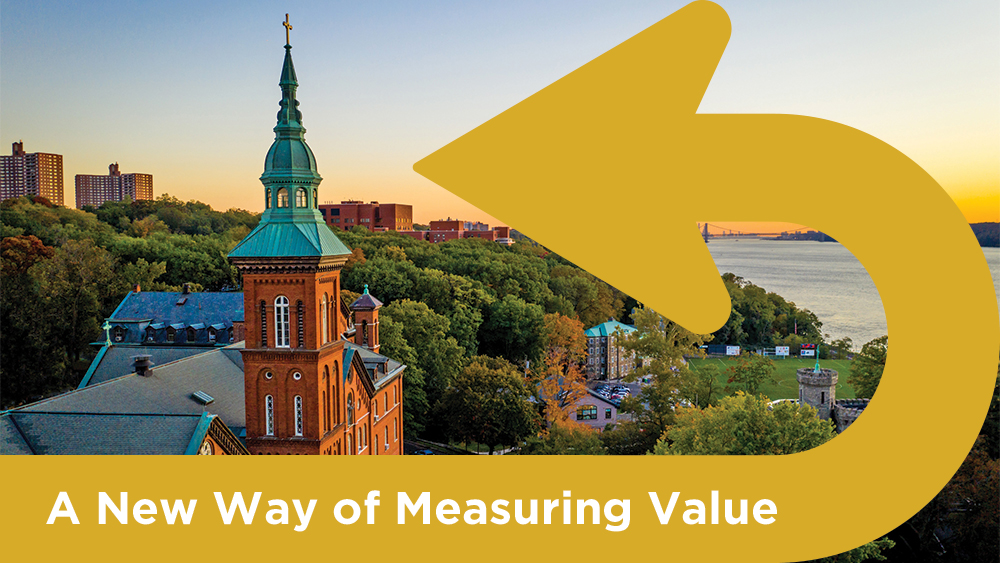Upgrading the Economic Mobility Index
9/16/2022
Mount Earns Tier 1 Ranking, Places in Top 20%
New Enhancements of the Economic Mobility Index (EMI)
In its earlier study, Third Way looked at the Price-to-Earnings Premium (PEP) for low-income students, defined as those whose families made $30,000 or less annually. It analyzed data from 1,320 bachelor’s degree-granting institutions and found that the colleges producing the most economic mobility accomplish two things for low-income students: 1) they offer a quick return on investment (a good PEP score), and 2) they enroll a large percentage of low-and moderate-income students (Pell Grant recipients) as part of their overall student body.
And this is all good news—rather than prioritizing selectivity and test scores like traditional rankings, they took a different approach: Third Way defined value based on how well institutions serve their low-income students, in addition to the proportion of low- and moderate-income students a school serves.
So what can we learn from these three updates that Third Way reintroduced?
First, in order to help students and families compare institutions more easily, they added an interactive tableau map—Rating Colleges by Economic Mobility—that depicts EMI data for colleges across the country. The map allows users to filter their searches by the amount of economic mobility an institution offers, the level of federal financial aid they receive, and the proportion of Pell Grant students at the school.
Second, Third Way has established a new tiered system of economic mobility. Instead of merely providing an ordinal ranking of hundreds of schools, based on their EMI, it now groups them into five distinct categories based on the similar levels of economic mobility they provide. Institutions are ranked from category 1 (those schools providing EMIs in the top 20% of all institutions) through 5 (schools ranking in the lowest 20% of EMIs).
The logic is that a school ranked No. 1 on the Economic Mobility Index is probably not that much more effective in helping students climb the economic ladder that the one ranked No. 10 or No. 20 or No. 40 😏. The ordered rankings implied more of a difference than is justified, while grouping colleges into categories more reasonably portrays those that do roughly equally well—or poorly—in producing economic mobility.
Third, Third Way now incorporates the amount of federal financial aid that institutions receive on an annual basis. Including the amount of federal financial aid each institution receives along with the economic mobility they provide gives a more complete picture of where tax dollars are being used most effectively and efficiently.
This addition reveals generally good news: more federal student aid goes to institutions that provide substantial economic mobility to their students. For example, the 264 institutions in Tier 1 received about $25.4 billion in federal student aid during the 2019-2020 award year. In comparison, the 263 institutions providing the least economic mobility—located in Tier 5—received approximately a third as much ($8.8 billion).
Here’s what that difference means in practical terms. On average, low-income students attending institutions in the top mobility tier can recoup their educational costs within only 2.2 years—a statistic our graduates excel at: our alums continue to gain recognition for having higher than average loan repayment rates. By comparison, it takes low-income students attending schools in Tier 5 over six times as long on average—13.7 years—to recoup their educational costs.
“Traditional college rankings consistently reward the most well-resourced schools year after year,” said Michael Itzkowitz, a senior fellow at Third Way and the author of the EMI report. “This new research provides a more comprehensive approach that can be used to determine which institutions are actually delivering on the promise of economic mobility, and which ones are not.”
Historical prestige tends to outweigh student outcomes in the most popular rankings, resulting in the same highly-selective and well-resourced schools getting shuffled around the best colleges lists year after year. And instead of questioning why these schools don’t admit their fair share of low-income students or students of color, these rankings continue to reward schools based on how many students they exclude—not how many they truly serve.
But, as per usual, the Right Place on the River continues to deliver on its promise, serving all students, while claiming its well-deserved place among the best in the region—and nation—for upward mobility.
Learn more about our National Recognition.
About the University of Mount Saint Vincent
Founded in 1847 by the Sisters of Charity, the University of Mount Saint Vincent offers nationally recognized liberal arts education and a select array of professional fields of study on a landmark campus overlooking the Hudson River. Committed to the education of the whole person, and enriched by the unparalleled cultural, educational and career opportunities of New York City, the College equips students with the knowledge, skills and experiences necessary for lives of achievement, professional accomplishment and leadership in the 21st century.

